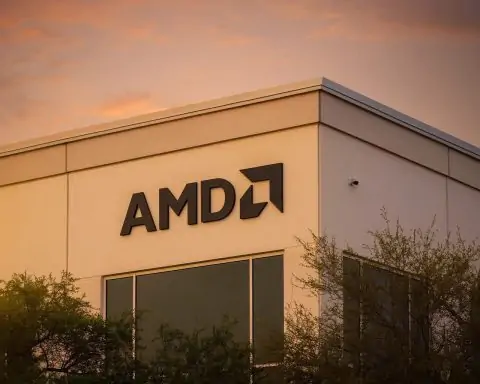- Desktop vs Server Dominance: Windows still powers ~71% of desktops worldwide, while Linux holds only ~4% (with macOS ~16%) – but Linux dominates servers with about 63% share [1] [2].
- Cost & Licensing: Linux is free and open-source, extending the life of older PCs without fees [3], whereas Windows requires paid licenses (Windows 11 needs modern hardware and even a Microsoft account sign-in).
- Software Availability: Windows runs proprietary staples like Microsoft Office, Adobe Creative Suite, AutoCAD, and most commercial apps out-of-the-box [4]. Linux relies on open-source alternatives (LibreOffice, GIMP) or compatibility layers (Wine/Proton) for Windows apps [5], making some workflows trickier.
- Gaming Lead vs. Surge: Windows remains the king for gaming with ~95% of Steam users [6] and broad support for DirectX and anti-cheat systems [7] [8]. Yet Linux gaming is surging – thanks to Valve’s Steam Deck (running Linux) and Proton software that lets many Windows games run smoothly on Linux [9]. 2025 saw Linux hit its highest Steam usage in years, signaling real momentum [10] [11].
- User Experience & Usability: Windows offers a polished, familiar GUI (Start Menu, Taskbar, plug-and-play device support) that most users find intuitive [12] [13]. Linux has become much more user-friendly with distros like Ubuntu and Linux Mint, but still presents a steeper learning curve for newbies and often requires use of the command line for advanced tasks [14] [15].
- Customization & Flexibility: Linux wins on customization – users can swap out entire desktop environments, alter every aspect of the UI, and even modify the source code. Windows is more locked-down; you get a consistent interface with theming options, but you can’t fundamentally alter system behavior as freely as Linux.
- Performance & Stability: Linux is lightweight and efficient on a wide range of hardware, offering faster boot times and the ability to revive decade-old PCs with minimal resources [16] [17]. It runs fewer background processes by default, which can make it snappier on low-end machines. Windows 11, by contrast, has higher requirements (4GB RAM, TPM, etc.) [18] and more background services, which can bog down older hardware [19]. Both OSes are very stable in daily use, though Windows’ mandatory update reboots can be disruptive. Linux can achieve extremely high uptimes (important for servers), but bleeding-edge updates or driver issues (especially with certain hardware) can introduce instability if not managed. Notably, in recent benchmarks on new hardware, Linux often matches or even exceeds Windows in performance – e.g. Ubuntu 25.04 outpaced Windows 11 by ~13% on one AMD Ryzen laptop test, winning 66% of benchmarks [20] [21].
- Security & Privacy: Both systems have improved security, but their philosophies differ. Linux’s design is “secure by default” – users have limited admin rights, software is installed from centralized repositories, and the open-source community swiftly finds and patches bugs [22]. Malware targeting desktop Linux remains rare compared to Windows [23]. Windows has made strides with built-in tools like Windows Defender, BitLocker, and SmartScreen and issues frequent security patches [24]. However, Windows is still the biggest target for viruses and ransomware due to its huge user base [25]. In enterprise settings, security is a driving factor for Linux: 74% of companies in one 2025 survey cited security as the top reason for migrating to Linux [26]. Privacy is another consideration – Windows 10/11 have drawn criticism for mandatory telemetry and requiring an online Microsoft account login for full functionality, whereas most Linux distros do not collect personal data by default [27] [28]. As one Forbes tech columnist put it, with Linux “there are no mandatory online accounts [and] no signing over your personal data to corporate overlords in the name of perceived convenience.” [29]
- Developer Experience: Developers often favor Linux for its open, Unix-like environment rich in programming tools and package managers. Linux gives you powerful scripting, native Docker/container support, and the same environment that powers most servers – “it just works” for coding. That said, Windows is still the single most-used OS among developers (for both personal and professional use) according to Stack Overflow’s 2024 survey [30]. Many devs use Windows 11 alongside the Windows Subsystem for Linux (WSL) to run Linux tools on Windows [31]. Microsoft’s ecosystem (Visual Studio, .NET, PowerShell) keeps some developers on Windows, but the gap is closing – when you combine all Linux distributions, the developer community using Linux is huge and arguably on par with Windows. In fact, Ubuntu alone was cited as the primary OS for ~28% of developers in that survey [32]. The rise of cross-platform tools (VS Code, JetBrains IDEs) and cloud-based dev environments means you can code on either OS, but many web and cloud developers prefer Linux for its native Docker/Kubernetes support and flexibility.
- Enterprise & Cloud Use: In businesses and data centers, Linux is king. An overwhelming majority of web servers run Linux – about 57.8% of all websites use Linux servers vs 10.3% on Windows (others are on unknown/other OS) [33]. Corporate server rooms value Linux for its stability, security, and cost: there are no license fees, and you can customize or script anything. Windows Server still has a presence (especially for Active Directory, Exchange, or legacy .NET applications), but it’s shrinking relative to Linux. In cloud computing, Linux is practically the default OS. Even Microsoft’s Azure cloud runs over 60% of its instances on Linux by 2025 [34]. (Microsoft’s CEO Satya Nadella famously went so far as to display a slide reading “Microsoft ♥ Linux”, underscoring how Azure’s future depends on Linux support [35].) Amazon Web Services and Google Cloud similarly rely on Linux for the vast majority of their workloads. Enterprises also appreciate Linux’s licensing model – no per-user or per-device fees – versus Windows’ licensing costs which can be substantial at scale. However, Windows still dominates enterprise desktops (most office workers use Windows on their PCs for its compatibility with Microsoft Office, Outlook, and enterprise management tools). Migrating an entire organization to Linux desktops remains rare in 2025, though some governments and companies experiment with it to save costs or for security. (Where Linux desktop is deployed, it’s often in kiosks, developer workstations, or as thin clients, rather than across non-technical staff.)
- Community & Support: The support ecosystems differ in style. Windows has vast official documentation and dedicated Microsoft Support (especially for enterprise customers who purchase support contracts). There’s also an enormous user community on forums and Q&A sites for troubleshooting Windows issues – but since Windows is closed-source, fixes come from Microsoft or approved vendors. Linux, on the other hand, thrives on community support. Every distribution has forums, mailing lists, and an open community eager to help. Solutions to obscure problems are often a search away on sites like Stack Exchange or distro-specific wikis. Power users can even inspect or modify the source code to fix bugs themselves or rely on the community to do so. For companies running Linux, enterprise-grade support is available from vendors like Red Hat, SUSE, or Canonical (Ubuntu) via paid subscriptions, which include professional assistance and timely patches. This “best of both worlds” option (free community help or paid premium support) appeals to many businesses.
- Hardware & Software Compatibility: Windows supports an unparalleled range of software and hardware, partly due to vendor support. Virtually every PC program is built for Windows first, and hardware manufacturers provide Windows drivers for everything from GPUs to printers. Linux’s device support has improved dramatically (the kernel supports an immense array of devices), but new or niche hardware can lag in Linux compatibility if manufacturers don’t cooperate. For example, consumer printers and specialty gaming peripherals sometimes require extra effort on Linux. GPU support is a mixed bag: AMD and Intel graphics have excellent open-source drivers on Linux, while NVIDIA’s proprietary Linux drivers work well but can be slightly behind their Windows counterparts in performance and features. (Notably, many gamers find AMD GPUs deliver a smoother plug-and-play experience on Linux, whereas NVIDIA cards may see a 5–30% FPS drop in some games under Linux due to driver overhead [36].) On the software side, Windows’ backwards compatibility means even decades-old apps often still run on Windows 11. Linux cannot run Windows applications natively, but projects like Wine and Proton (for games) emulate Windows APIs to fill the gap – with surprisingly good success for many applications. Still, certain professional apps (Adobe Photoshop/Premiere, AutoCAD, Microsoft Excel with complex macros, etc.) either don’t exist on Linux or don’t work perfectly under emulation. Organizations that rely on these often stick with Windows, or use workarounds like virtual machines or cloud app streaming for Linux users [37]. Conversely, almost all open-source and programming tools work on Linux, and an increasing number are cross-platform. In 2025 we also see Microsoft continuing to bring popular software to Linux – for instance, Microsoft Teams and SQL Server have Linux versions, and VS Code is open-source and runs on Linux. The lines are blurring, but in general Windows offers “it just works” compatibility for mainstream consumer and business software, whereas Linux may require alternatives or extra steps, especially for specialized proprietary tools.
- Recent Changes & News (2024–2025): Both OSes have evolved significantly in the past year or two:
- Windows: Microsoft has been integrating AI into Windows 11, introducing the Windows Copilot digital assistant and other AI-powered features in late 2023. This is a taste of what’s to come – Windows 12 is rumored for 2025, and is expected to heavily emphasize AI capabilities and even tighter cloud integration [38] [39]. On the horizon are features like an AI “Recaller” that indexes everything you do for easy search (though such ideas have raised privacy concerns) [40]. On the support front, a critical deadline looms: Windows 10 reaches end-of-life in October 2025, meaning no more security updates [41]. This is forcing individuals and organizations to decide between upgrading to Windows 11 (or 12) or exploring other options like Linux. Indeed, some tech experts are urging Windows 10 users to consider switching to Linux rather than buying new hardware for Windows 11 [42]. Microsoft’s hardware requirements (TPM 2.0, newer CPUs) mean many older PCs can’t officially run Windows 11 – but they can run modern Linux distributions, a fact not lost on budget-conscious users.
- Linux: The open-source world has seen its own developments. One big story was Red Hat (now IBM-owned) changing how it publishes RHEL source code, effectively making it harder for downstream clones like AlmaLinux and Rocky Linux to track Red Hat’s enterprise Linux [43]. This sparked debates on open-source ethics and led to new community initiatives (such as the OpenELA project) to ensure a free RHEL-compatible platform. In desktop Linux news, 2024 brought new long-term support releases like Ubuntu 24.04 LTS, with updated GNOME desktop and better hardware support (including improved support for Apple Silicon and cutting-edge GPUs). The KDE community rolled out Plasma 6, a major overhaul of the popular Linux desktop environment, expected to land in distros in 2025 with even more polish for Wayland (the next-gen display server). Perhaps the most visible win for Linux has been in gaming and devices: Valve’s Steam Deck (released late 2022) is still going strong in 2025, demonstrating to millions that a Linux-based OS can handle AAA games. Its influence pushed Linux’s share on Steam to around 1–2%, the highest in over a decade [44]. Each Steam Client update and Proton version in 2024 made gaming on Linux incrementally better – even many anti-cheat systems (Easy Anti-Cheat and BattlEye) became Linux-compatible through Proton, allowing hit titles to run. This momentum has led enthusiasts to joke that “2025 might finally be the Year of the Linux Desktop,” citing the Steam Deck’s success and the steady stream of converts from Windows in niche communities. While a true desktop revolution isn’t here yet (Linux is still ~4% of desktops [45]), the ecosystem in 2025 is the healthiest it’s ever been: virtually every major application category has a viable Linux solution, and companies like Valve, Canonical, SUSE, and IBM are investing heavily in Linux. Even Microsoft continues to support Linux interoperability (WSL improvements, Linux containers on Azure, etc.), showing that cross-OS coexistence is the future.
Conclusion
In the Windows vs. Linux showdown of 2025, there is no one-size-fits-all winner – each OS excels in different arenas. Windows offers ease of use, broad app compatibility, and a familiar environment that’s ideal for mainstream personal and business use. Linux shines in flexibility, security, cost efficiency, and power-user/developer features, and it utterly dominates the server and cloud world. As one IT consultant put it, transitioning to Linux has evolved from a fringe idea to “a full-fledged enterprise strategy”, thanks to its benefits in security, cost control, and technological independence [46]. For casual users and gamers, Windows still holds many advantages, but Linux has eroded several of them (with gaming breakthroughs and more polished user-friendly distributions). Ultimately, the choice in 2025 comes down to your needs and values: convenience and plug-and-play support (Windows) versus control and freedom (Linux). The good news is that both systems are better than ever – and with virtualization and dual-booting, many people happily use both side by side. The competition has clearly benefited everyone, driving innovation on both platforms. Whether you stick with Windows, switch to Linux, or use a bit of each, 2025 is a great year to be a PC user.
Sources: Windows vs Linux market share and usage [47] [48] [49]; Forbes and TechNewsWorld on Windows 10 EOL and Linux advantages [50] [51]; BlueFox & Hfrance on enterprise Linux trends [52] [53]; Phoronix on performance benchmarks [54] [55]; WebProNews on Steam Deck and Linux gaming stats [56] [57]; WPS Office Blog on OS features (usability, security, software) [58] [59] [60] [61]; Stack Overflow 2024 survey on developer OS use [62] [63]; Microsoft Azure blog [64].
References
1. en.wikipedia.org, 2. en.wikipedia.org, 3. www.bluefoxconsultant.com, 4. www.wps.com, 5. www.wps.com, 6. www.webpronews.com, 7. www.wps.com, 8. www.wps.com, 9. www.webpronews.com, 10. www.webpronews.com, 11. www.webpronews.com, 12. www.wps.com, 13. www.wps.com, 14. www.wps.com, 15. www.wps.com, 16. www.wps.com, 17. www.wps.com, 18. www.wps.com, 19. www.wps.com, 20. www.phoronix.com, 21. www.phoronix.com, 22. www.wps.com, 23. www.wps.com, 24. www.wps.com, 25. www.wps.com, 26. www.bluefoxconsultant.com, 27. www.bluefoxconsultant.com, 28. www.bluefoxconsultant.com, 29. www.forbes.com, 30. survey.stackoverflow.co, 31. survey.stackoverflow.co, 32. survey.stackoverflow.co, 33. w3techs.com, 34. azure.microsoft.com, 35. www.microsoft.com, 36. www.reddit.com, 37. www.bluefoxconsultant.com, 38. www.windowscentral.com, 39. www.windowscentral.com, 40. www.windowscentral.com, 41. markets.traderfox.com, 42. www.bluefoxconsultant.com, 43. www.bluefoxconsultant.com, 44. www.webpronews.com, 45. www.bluefoxconsultant.com, 46. www.bluefoxconsultant.com, 47. en.wikipedia.org, 48. en.wikipedia.org, 49. w3techs.com, 50. www.bluefoxconsultant.com, 51. www.bluefoxconsultant.com, 52. www.bluefoxconsultant.com, 53. www.bluefoxconsultant.com, 54. www.phoronix.com, 55. www.phoronix.com, 56. www.webpronews.com, 57. www.webpronews.com, 58. www.wps.com, 59. www.wps.com, 60. www.wps.com, 61. www.wps.com, 62. survey.stackoverflow.co, 63. survey.stackoverflow.co, 64. azure.microsoft.com










